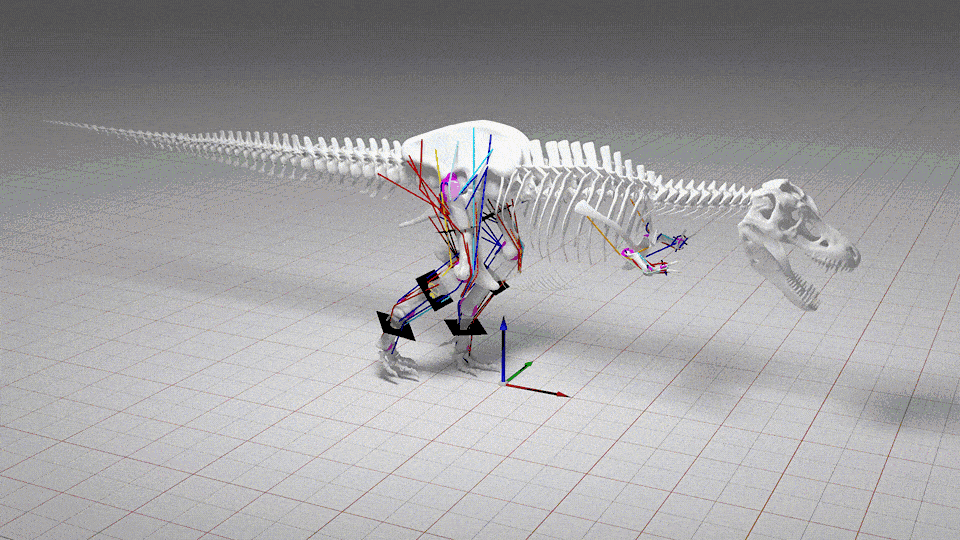When you purchase through link on our site , we may make an affiliate perpetration . Here ’s how it works .
The mightiestTyrannosaurus rexon record is a colossus discover Scotty , who — during its lifetime on Earth about 65 million age ago — weighed a honking 19,555 pound . ( 8,870 kg ) , or about as much as 6.5Volkswagen Beetles , a new study discover .
Scotty was so massive , it edged outSue , the famousT. rexat the Field Museum of Natural History in Chicago , as heavyweight champ .

A cast of Scotty and its giant chompers.
In all , Scotty is about 880 lbs . ( 400 kg ) heavy than Sue , " which is a tidy sum by human standards , but not as much when you ’re dealing with a tyrannosaurus , " said report lead researcher Scott Persons , a paleontologist at the University of Alberta . [ Gory Guts : Photos of a T. Rex Autopsy ]
Researchers originally found Scotty in 1991 , near the township of Eastend , Saskatchewan . But it took old age to drudge out and then train the dinosaur king , because the rock the fossil were plant in was so " gosh darn severely , " mortal told Live Science . That stone — heavily cement sandstone rich in iron — was part of the Frenchman Formation , which date to thelate Cretaceous menstruation , from about 72 million to 65 million years ago .
T. rexes , however , lived for only the last 2 million year of the Cretaceous , or from about 67 million to 65 million years ago .

Scotty’s enormity is obvious (see paleontologist Scott Parsons for scale).
The research worker were so thrilled at the find , they celebrated it with a goner . " The only spirit that was on hand was on old bottle of scotch , " Persons enunciate , which inspire them to name theT. rexScotty . However , it ’s unclear whether Scotty was manlike or female , Persons noted .
After all of Scotty ’s fossils were prepared , researchers found they had about 65 percent of the skeleton , let in the skull , the cranium ( the part of the skull that holds the wit ) ; the low jaw ; vertebrae from the neck , back and tail end ; and parts of the hips , pegleg and berm .
However , Scotty is n’t the heavy dinosaur on record . That award likely croak to the tenacious - neckedArgentinosaurus , who could have weighed up to 110 tons ( 100 metric heaps ) , according to some estimates . ( The feat of determining dinosaur mass is a extremely debated field of study , as thereare different slipway to calculate it . In this compositor’s case , scientists determined Scotty ’s mass by compare the ratio of its bones and plugging these measuring into a formula , Persons said . )

Scotty’s impressive teeth
Moreover , while Scotty is the heaviestT. rexon record , it ’s not the longest . AT . rexnamed Stan , who is on show at theBlack Hills Institute of Geological Research , sweep nearly 40 foot ( 12.2 m ) from beak to track . In addition , the most accomplished knownT. rexremains Sue , who is about 90 percent thoroughgoing .
But Scotty has other claims to renown . For instance , it in all likelihood reached its 30th birthday , making it the longest - livedT. rexon record , fit in to a pearl analysis by study co - investigator Gregory Erickson , a professor of bod and vertebrate palaeobiology at Florida State University . Erickson did this by looking at the emergence rings in the dinosaur ’s bones ( like trees , dinosaur boneslaid down new ringsas they aged . )
Scotty ’s bones also preserved the dinosaur ’s dramatic injuries , all of which had healed by the sentence the dinosaur give-up the ghost . These included a broken jaw , broken rib and a pressed serial of vertebra that Scotty support during its " violent and remarkably long spirit , " the researchers publish in the study .

They bestow that the " relative scarceness of other equally gravid and ripe T. male monarch specimens " suggests that these brute tended to conk before they passed the 8.8 - long ton ( 8 measured scads ) limen .
Scotty will be on public showing at the Royal Saskatchewan Museum in Regina , Saskatchewan , this May . The study was published on-line March 21 in the journalThe Anatomical Record .
in the beginning bring out onLive Science .













